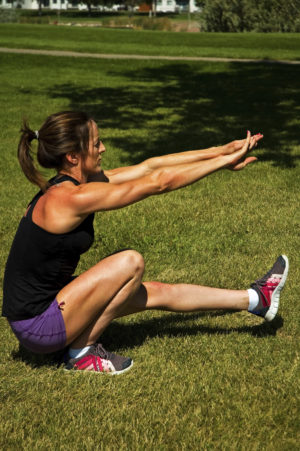ATC: Must-Knows for Buying a Bike, Effects of Intermittent Hypoxic Training, Why Pistol Squats are Your Friend, and More
November 20, 2015
Check out enduranceplanet.com/shop for trusted products and services, special savings and ways to keep you healthy and fit for a lifetime. When you shop through the podcast and you support the show! You can also support the show by clicking our Amazon link or banner (to the right) when you’re shopping online!
It’s that time of year to assess your health to make for an even better 2016. Check out the services offered by our friends at Nourish Balance Thrive, the wellness solution created for athletes, by athletes… we’re getting our tests re-done soon, how about you?
Shoutout: Ultrarunner Liza Howard learns about TeamRWB via Endurance Planet & now their trail running camps are booming! Read about it here.
Want to join the EP crew for Ragnar SoCal April 1-2, 2016, email us now at events@enduranceplanet.com!
New cool research in the Journal of Strength and Conditioning; we review it:
“Effects of intermittent hypoxic training (IHT) followed by intermittent hypoxic exposure (IHE) on aerobic capacity of long-distance runners.”
Highlights of the study:
Questions:
-Does IHT improve aerobic capacity?
-Aerobic capacity post IHT (Does detraining occur after ending IHT?
-Does IHE (exposure at rest) attenuate detraining effect after IHT
Details:
Three groups of trained endurance runners including a control; single-blind:
1) group 1: 6 weeks of IHT, 4 weeks of IHE
2) group 2: 6 weeks of IHT, 4 weeks of normoxic exposure
3) control: 6wks of regular training; 4 wks of normoxic exposure
-Two training sessions per week for groups 1 & 2 were IHT. Subjects lived and trained at 760m.
Their conclusions:
-Lactate threshold and running economy improved in all groups at post-training, but VO2max, vVT1, and vVT2 improved only after IHT, while improvement in VO2max was inversely associated with baseline VO2max;
-There was no detraining 4 weeks after IHT, with or without IHE. IHE was not required to maintain training adaptations.
-IHT induced more physiological adaptations than NT, which indicates that IHT may be a useful strategy to improve sea-level aerobic capacity of athletes with an intermediate level of aerobic capacity.
-Hemoglobin concentration did not change after IHT or NT. On the other hand, VO2max improved after IHT. Altogether these results suggest that hematological factors do not seem to explain VO2max improvement. An alternative explanation could be the IHT effect on hypoxia inducible factor-1α (HIF-1α), a non-hematological factor. It has been shown that HIF-1α contributes for changes in mitochondrial function and expression of genes related to redox regulation and glucose uptake after IHT
Our conclusions:
How much do these little things like IHT matter? Is it too much of a “quick fix” and should we be about the bigger picture on what goes into a good performance, i.e. the psychology, mental toughness and other variables, like health, that matter. And a tangent on IMAZ and Andrew Starykowicz’ bike split and overall race execution.
Answers to questions:
Bike Buying
– For an age-grouper, is there any real advantage considering a new bike? Or stick with what you got if it seems to be working?
– 650c vs 700c wheels
– Lots of bike knowledge from Lucho!!!
Pistol Squatting
– How to tackled single leg squats (pistol squats) effectively and safely into a strength training routine?
– How far should you go down; what is safe and how to progress to go deeper
– What’s the different between form on a pistol squat vs a weighted front or back squat – it matters!
– More reading here on form (curvature of spine and butt wink) at BreakingMuscle.com
HIIT vs. MAF
– Pros and cons of HIIT? Can HIIT complement a committed MAF approach? Or not? How to decide if you should be doing HIIT or MAF…
Marathon taper
– should a MAF-based athlete add in some speedwork a few weeks before your marathon?
Add your thoughts

Comments (3)
Just curious what was the protocol the subjects followed 2x per week? Was it a workout or just wearing a mask with low oxygen?
Good question! For those 2x a week sessions for the 6wks, they were in the lab wearing the mask set at hypoxia corresponding to an altitude of 3,000m and: "Each training session began with a 10-min warm-up at 60% of vVO2max, followed by two periods at a velocity in which training HR was most of the time at hrLT of the lactate threshold test, with a range of 5% from the target HR. During weeks 1 and 4, subjects performed 2 bouts of 12 min at hrLT; weeks 2 and 5, they performed 2 bouts of 16 min at hrLT; and weeks 3 and 6, they performed 2 bouts of 20 min at hrLT. There was a 5-min recovery interval at 60% vVO2max between the two bouts. Subjects who trained in hypoxia were exposed to hypoxia only during the period that they were training at hrLT (i.e. warm-up and recovery were performed in normoxia)."
Thank you heaps for answering my question on pistol squats. I’m already incorporating your suggestions into my training. Looking forward to be able to get low but most importantly improving my running form and balance. Endurance Planet was the first podcast I ever listened to and now I’m all over it! Love the show and always learn something from it. Keep it up guys!